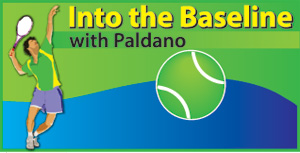Wits and wisdom of survival
Tennis started in the mid eighteen hundreds and the International Tennis Federation [ITF] took control of it from 1915. With Countries as its members it was the accepted authority of the game. No one ever challenged its status. Worldwide the thought never went beyond this.
Without any other claimant, Tennis did not have to think about or plan to survive another Year. It happened. ITF exerted its authority through its events and those of National Associations. A planned global calendar came very recently to Tennis. It has changed the status of ITF.
Professional’s control
WTA and ATP, the two professional Tennis bodies, which have been in existence for over two decades appear to be in close association with ITF. In reality it is not so. The professional bodies are ‘calling the shots’. In player strength, ITF has only the junior ranking system under their control. Even here, there are so many other possibilities for a junior today to skip ITF. What is more, Universal Tennis Rating [UTR] is gaining credibility over ITF junior ranking?
With the permitted professional participatory age taken down to 15 years, all age group ranking, suffers credibility. Now along with the elite juniors WTA and ATP have full-fledged control of the entire spectrum of Tennis players. Company style CEO’s are in charge of their outfit as commercial enterprises.
Player cults
Events such as the Grand-Slam, Davis Cup and FED CUP are ITF holdings, as ‘brands’. The notion is very strange for people who have played the game even just for fun over fifty years. It gives the impression that Tennis, which was a recreational, participatory, social and sporting activity is been taken to be another commercial enterprise.
In the past top end players retired gracefully. Today every one of them is starting or has a plan, for a calendar activity. These are franchise-based to cater to the needs of City Tourism, Hotel, travel and many other industries. Tennis will have to survive the challenges taking place in the game, without losing credibility as a sporting event.
With the money available being considerable, good older players do not want to leave the competition scene of. Certainly, for any player, post-career prospect is an uncertainty and could be a fear. Records show that not many retired players are in happy situations. Right now very many big still active, names have initiated moves to make sure that events are staged annually with their outfits, securing some income to sustain themselves in retirement. They have easy playing formats and appealing commercial interest.
New Territories
It is known that ‘The last emperor of China’ had a French tutor and was introduced to Tennis. It was in the early nineteen hundred. The next thing we know about China is the arrival of the Chinese Tennis Team in Colombo in the late nineteen sixties. China always did have some Tennis players throughout the nineteen hundred. Since their reforms, it is a well-established new territory.
 Far East has opened up for Tennis. From the early 1900’s Viet Nam under the French had many Tennis Clubs and Courts. Tennis never went out of Japan, China, the Philippines, Indo-China and in the British Colonies of Asia in the last 100 years. The game is now well revived with the likes of recent women’s world number one Li Na.
Far East has opened up for Tennis. From the early 1900’s Viet Nam under the French had many Tennis Clubs and Courts. Tennis never went out of Japan, China, the Philippines, Indo-China and in the British Colonies of Asia in the last 100 years. The game is now well revived with the likes of recent women’s world number one Li Na.
Last year in the WTA and ATP calendar, Asian regions with their economic boom had mega prize money events. They are using the winter and the autumn of the northern hemisphere to stage their events. Australian season has become very short with events in China and in South East Asia. They are taking the slots before and immediately after Australian Open. Players are also happy to escape the Australian summer heat.
Style of play
The norm of tackling the shots on the right side of the court with forehand stroke and other with backhand was the accepted learning method. John McEnroe and Ivan Lendl placed themselves off centre when playing from baseline and covered more with their forehand stoke. It was novel at that time. Mighty Steffi Graf often covered the entire court virtually with her highly effective Forehand stroke and had only a reliable slice backhand. It must be said that it was her speed of court coverage that accommodated it. Tennis was never taught like this. These appealing, innovative games came from individual ability.
In rigid teaching method there is no room for players to evolve in what could be considered as artistic free style. With squad training dominating, rigid right and wrong principle is implemented killing talented moves. It curtails tactical play very badly and is dominant in most national development systems. The teaching and manning formats of it in most associations could be considered rigid, obsolete and ineffective. If ITF is to regain its past glory, this should be their starting point for changes.
Collective responsibility
of Nations
What ever happened here cannot be fathomed. Over 200 member states constitute the ITF. The Main reason for the decline of ITF influence is the promotional and administrative ineffectiveness of the member states.
This chapter needs a rewrite to reform ITF. A rewrite could only happen after the fall. Meanwhile professional WTA, ATP, UTR and private outfits are the lead players in command of the game. This uncertainty leaves a question hanging. To whom does Tennis belong now?
George Paldano, Former int. player; Accredited Coach of German Federation; National coach Sri Lanka & Brunei, Davis-Cup, Federation
Cup captain/coach– contact 94 77 544 8880 geodano2015@gmail.com –


